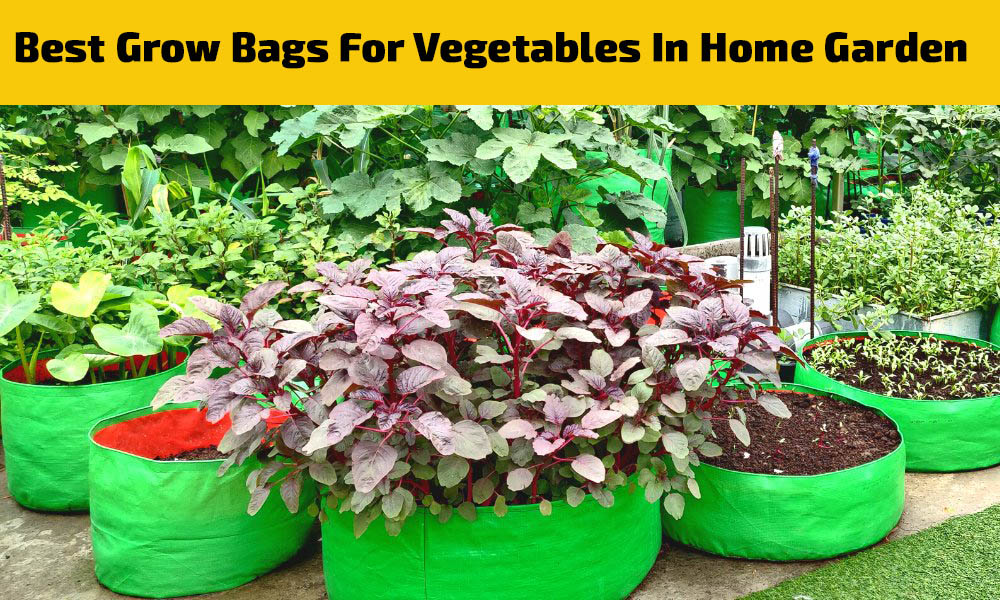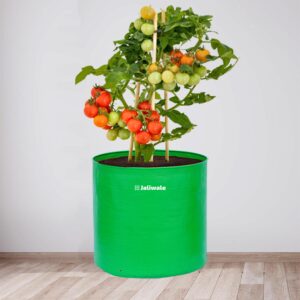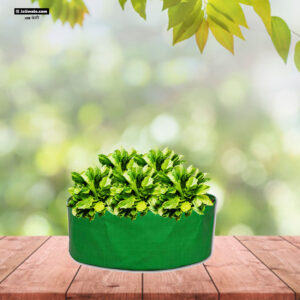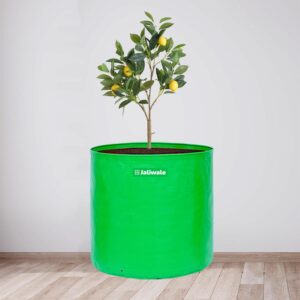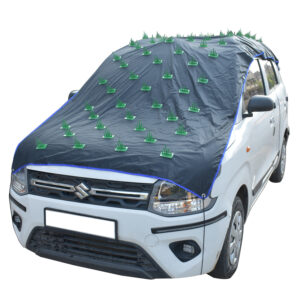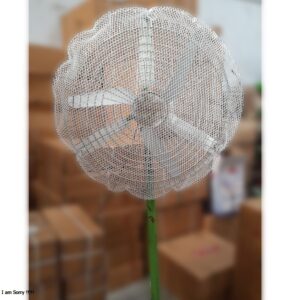[vc_row][vc_column][vc_column_text]Whenever we start gardening our first choice is vegetables because we know they are very easy to grow. But sometimes the main reason for the unsuccessful growth of vegetable plants is the wrong size of grow bags. If you are going to start gardening in grow bags then don’t worry, here we will share grow bag sizes for all vegetables. By which you will get the best result. Nowadays, grow bags are very popular as they give the idea of starting gardening without a large space or garden. Grow bags not only have a lot of benefits but also save our money and space.[/vc_column_text][/vc_column][/vc_row][vc_row][vc_column][vc_column_text]
Grow Bags Size Chart For Vegetables
[/vc_column_text][/vc_column][/vc_row][vc_row][vc_column][vc_column_text]Different vegetables have different plant sizes, creeper vegetable plants need a large grow bag or pot while microgreens or leafy vegetables do not require deep grow bags. Here we will tell you about the best-size grow bags for all types of vegetables. Hope this chart will help you in selecting the right size of grow bag.[/vc_column_text][/vc_column][/vc_row][vc_row][vc_column][vc_column_text]
| S.no | Vegetable Name | Best Grow Bags Size |
| 1. | Leafy vegetables
(Coriander, Methi, mustard green, Leeks, Parsley, Spinach, Lettuce, kale, Sorrel, Swiss Chard, etc.) |
24×9 inch (WXH)
9×9 inch (WXH) 18 X 6 inch (WXH) 18 X 6 inch (WXH) 48 X 24 X 12 inch 3F X 2F X 1F |
| 2. | Creeper vegetables
(Bitter Gourd, Bottle Gourd, zucchini, snake gourd, cucumbers, beans, etc.) |
15 X 15 inch (WXH)
18 x 18 inch (WXH) 18 x 15 inch (WXH) 15 X 18 inch (WXH) |
| 3. | Microgreens | 24×6 inch (WXH)
18 X 6 inch (WXH) 6×6 inch (WXH) |
| 4. | Tube or root vegetables
(Radish, carrot, beetroot, Turnips, onion, ginger, potato) |
15 X 12 inch (WXH)
24×12 inch (WXH) 9×9 inch (WXH) 18 x 15 inch (WXH) 48 X 24 X 12 inch |
| 5. | Brassica family vegetables
(cabbage, Cauliflower, broccoli, Kohlrabi, Brussels sprouts, Collards) |
15 X 12 inch (WXH)
12 x 12 inch (WXH) 3F X 2F X 1F 60 X 15 X 15 inch |
| 6. | Other vegetables
(Tomato, Brinjal, Green chili, Lady Finger, Corn, etc.) |
12 x 15 inch (WXH)
15 X 12 inch (WXH) 15X15 inch (WXH) 18 X 18 inch (WXH) |
[/vc_column_text][/vc_column][/vc_row][vc_row][vc_column][vc_column_text]
Grow Bag Types For Vegetables
[/vc_column_text][/vc_column][/vc_row][vc_row][vc_column][vc_column_text]Nowadays gardening is very popular and easy and the main reason for this is pot or container gardening. There are different types of grow bags in the market which give us the option of vegetable gardening at home or on the terrace or balcony.
- HDPE (High-Density Polyethylene) grow bags are made up of high-quality plastic, a little more expensive than plastic grow bags but more durable, and thicker. HDPE grow bags are light weighted, portable, washable, reusable, and suited for all types of plants.
- Fabric Grow Bags looks amazing and lightweight made from a double layer of polypropylene material or recycled plastic bottles and natural fibers which helps to circulate the air easily. Fabric grows bags are very beneficial for vegetable gardeners but are more expensive than HDPE grow bags.
- Plastic Grow Bags/Pots are the most common and affordable that are made up of plastic. It comes in a variety of sizes but is less durable and has no aeration.
[/vc_column_text][/vc_column][/vc_row][vc_row][vc_column width=”1/4″]
How To Use Grow Bags For Vegetable Plants
[/vc_column_text][/vc_column][/vc_row][vc_row][vc_column][vc_column_text]Planting vegetables in grow bags or other containers is not different but some important things that you must remember during sowing any vegetable seeds are:-
- Make a potting mix that you can make your own or buy online by mixing 20% cocopeat, 30% vermicompost, 30% garden soil, and 20% sand.
- Check the drainage hole if there is already then it is good otherwise make some drainage holes to avoid waterlogging.
- Fill the grow bag with potting soil and leave a few inches at the top.
- Sow the seeds according to the size of the vegetable seeds.
- Take care of the vegetable plants according to their needs.
[/vc_column_text][/vc_column][/vc_row][vc_row][vc_column][vc_column_text]
FAQ
1. Why are grow bags preferred over plastic pots?
Answer:- Grow bags have become ideal for vegetables and other plants as compared to other plastic bags or pots because they are lighter in weight, UV protected, reusable, washable, unbreakable, and reduce the risk of overwatering.
2. Do grow bags need drainage holes?
Answer:- Drainage holes are essential in grow bags to allow excess water to flow but fabric grows bags do not require drainage holes as they have the ability to absorb water. Usually, grow bags have drainage holes, and if not so you can make a few holes at the bottom of the grow bags.
3. What is the standard size of grow bags for vegetables?
Answer:- 15 x 15 inches (WxH) is the most suitable size for all leafy, creeper, tube or root, or other types of vegetables.[/vc_column_text][/vc_column][/vc_row]

